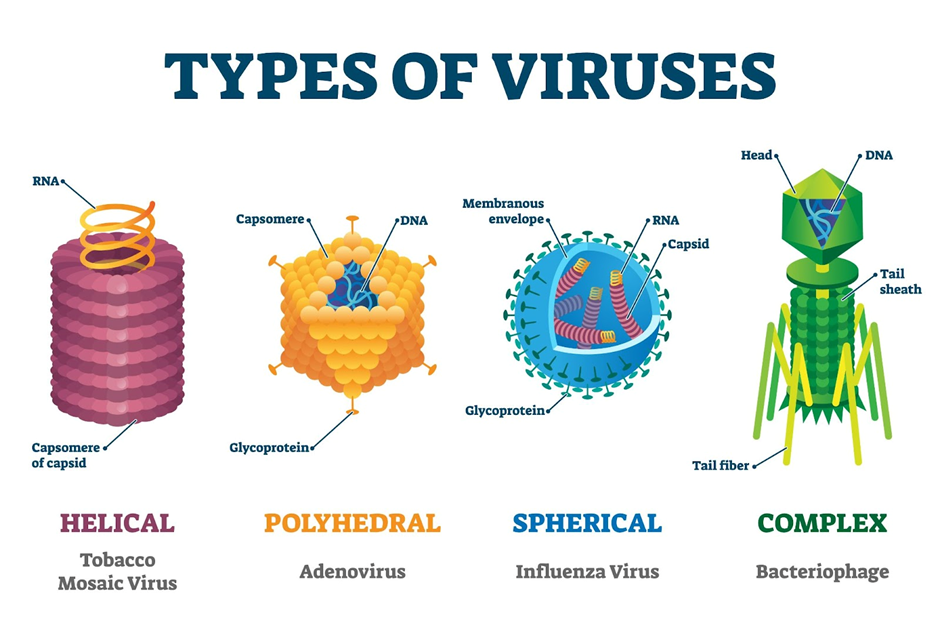What is virus?
Viruses are placed at the edge of being living and nonliving .When viruses are present in air or in surroundings they remain inert and act as non living component.Whereas when they come in contact with a living organism like plant, animal, bacteria they act as living entity. In Latin virus refers to poison and the term was given by Louis pasteur.
With the advent of smallpox , the evidence of the existence of viruses also emerged. Later in 1892 Iwanowski discovered something even smaller than bacteria in Tobacco mosaic disease which was later classified as virus(Tobacco mosaic virus).
Viruses are infectious agents having size even smaller than a bacteria.They lack capacity to reproduce outside the host environment and specific cellular structure. When any virus particle attains the ability to infect a host cell they are termed as virion. When present outside the host cell they merely act as a protein coat floating in air.
Viruses are found in varied shapes and sizes.They have centrally placed nucleic acid either as RNA or DNA surrounded by a protein coat. For instance Monkeypox virus has double stranded DNA as genetic material.
This protein coat is called capsid which performs the function of protecting the genetic material inside.Also this protein coat has sites for attachment to the host cell. For instance Corona virus has spike protein on its capsid to attach to the cells of the host cell. Viruses can be classified as per their shape as shown in figure 1.
Examples of animal viruses- Adenovirus, Pox virus, Myxovirus.
Example of plant disease causing virus- Tobacco mosaic virus, Cauliflower mosaic, Cucumber mosaic virus.
Also Read: Assimilation

Fig 1 Types of viruses on basis of shape.
Structure and Function of Viruses
Viruses are extremely small, typically measuring between 30-50 nm. They lack cellular structures and usually do not have a cell wall, but are enclosed by a protective protein coat called the capsid. Viruses can be seen as genetic elements that evolve alongside their hosts, containing either RNA or DNA as their genetic material.
Viruses rely on host cells to provide the complex metabolic machinery necessary for their replication. Their primary function is to deliver their genetic material (DNA or RNA) to the host cell, which then uses it for transcription and replication. The viral genome is encased in a symmetrical protein structure called the capsid, forming the nucleocapsid when associated with nucleoproteins.
Also Read: Sexual Reproduction
Properties of Viruses
- They are non-cellular organisms enclosed in a protective envelope.
- The presence of spikes aids in attaching the viruses to host cells.
- These viruses do not grow, respire, or metabolize, but they do reproduce.
- They have a protein coat called a capsid and a nucleic acid core containing DNA or RNA. Viruses are considered both living and non-living.
- They are inactive outside host cells but become active within them, causing infections and reproducing by utilizing the host's enzymes and raw materials.
Read More: Asexual Reproduction
Classification of Viruses
Viruses are primarily classified based on their phenotypic characteristics, core content, chemical composition, capsid structure, size, shape, replication methods, and viral genome structures.
The Baltimore classification system, developed by American biologist David Baltimore in the 1970s, is the most widely used method for virus classification. This system earned him the Nobel Prize.
The following information outlines the classification of viruses based on various criteria.
- Classification based on the presence of nucleic acid
- Classification based on the structure or symmetry
- Classification based on the structure or symmetry
- Classification based on the host range
- Classification based on the mode of transmission